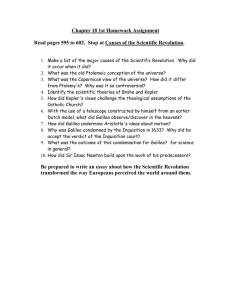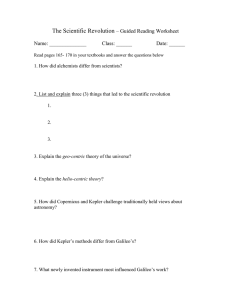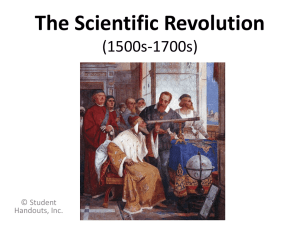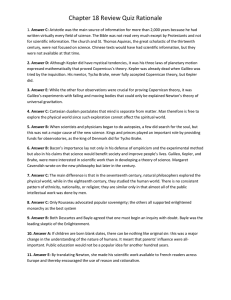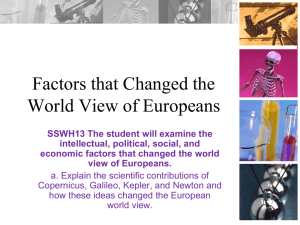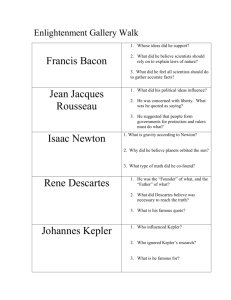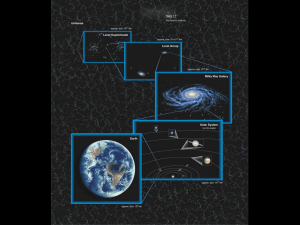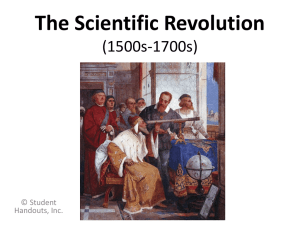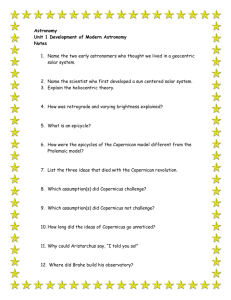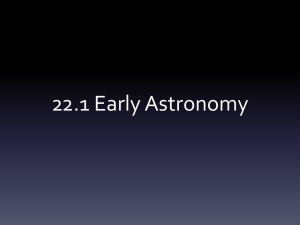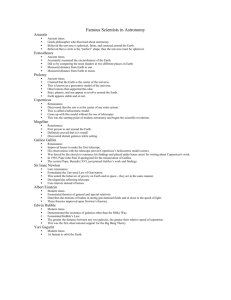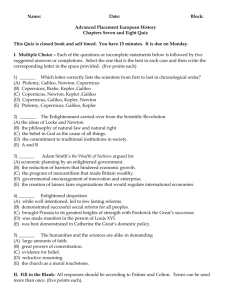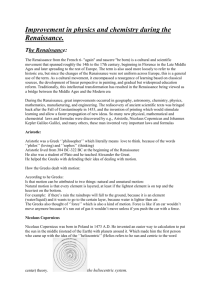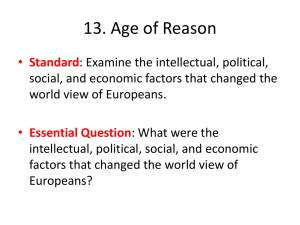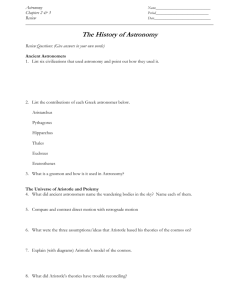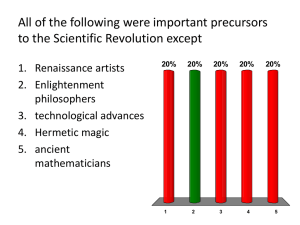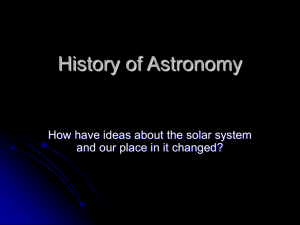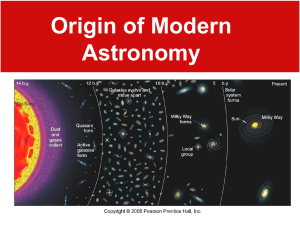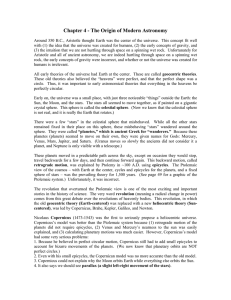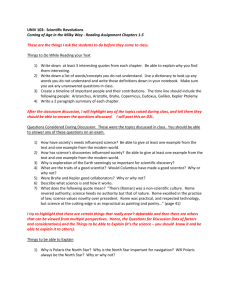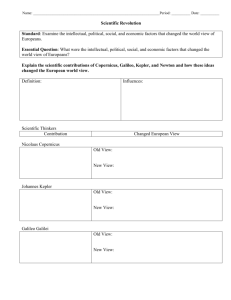The Scientific Revolution: Astronomy
advertisement
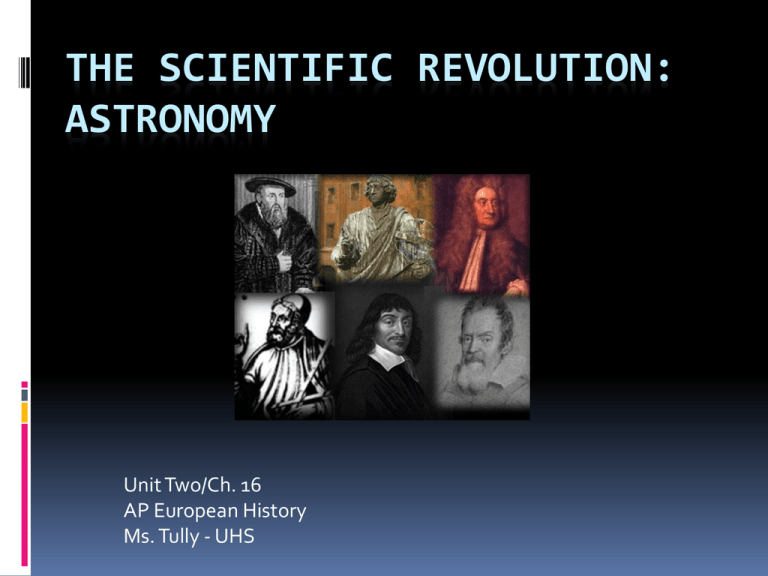
THE SCIENTIFIC REVOLUTION: ASTRONOMY Unit Two/Ch. 16 AP European History Ms. Tully - UHS Focus Question What did Copernicus, Kepler, Galileo, and Newton contribute to a new vision of the universe, and how did it differ from the Ptolemaic conception of the universe? Background to the Scientific Revolution Revival of classical works by Renaissance humanists Renaissance artists – anatomy, mathematics Exploration technical advancements Printing press Rediscovery of ancient mathematics Renaissance magic desire to understand & dominate nature Geocentric conception concentric spheres w/ fixed earth at center Nicolaus Copernicus (1473-1543) Spent 24 years developing heliocentric conception On the Revolutions of Heavenly Spheres Challenged Ptolemaic system sun at center New uncertainty of human role Condemned by Protestants & Catholics Tycho Brahe (1546-1601) & Johannes Kepler (1571-1630) Brahe Danish nobleman w/ a castle on island 20 years of detailed observations Brahe’s assistant Johannes Kepler Kepler gained possession of Brahe’s data Three Laws of Planetary Motion Eliminated idea of circular motion & crystal spheres Galileo Galilei (1564-1642) First European to use telescope in astronomy Contradicted theory that everything is made like the earth The Starry Messenger (1610), Dialogue on the Two Chief World Systems: Ptolemaic and Copernican Condemned by Roman Inquisition put under house arrest for 8 years Developed law of inertia Isaac Newton (1642-1727) Created synthesis of Copernicus, Kepler, Galileo Englishmen, studied at Cambridge Invented calculus, studied composition of light, law of universal gravitation Principia (1686) President of Royal Society in 1727 Universality of law could mathematically explain all motion in the universe Dominant world view until 20th C
